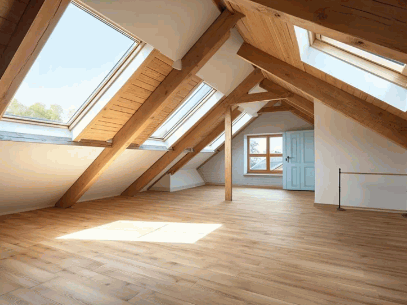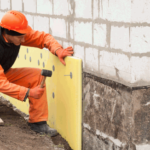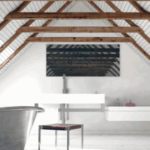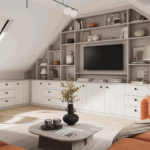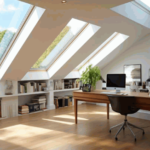Thinking about maximizing your home’s potential? A loft conversion might be the perfect solution, especially when considering planning permission and the unique challenges each property presents.
This guide explores what a loft conversion is, including essential aspects such as building regulations and planning consent, and which types of houses can benefit from this transformative upgrade.
Discover the numerous advantages, from increasing living space and usable space to boosting property value, and learn about the requirements and costs involved, including important insights on loft conversion costs.
Whether you’re in a detached house, a bungalow, or even a flat, find out how to make the most of your attic space and enhance your home, keeping in mind the existing roof structures and potential design considerations.
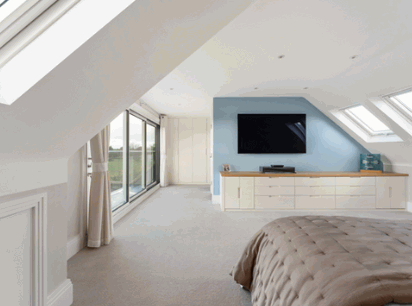
What Is A Loft Conversion?
A loft conversion is a transformative home improvement project that involves converting an existing loft space into usable living areas, such as bedrooms, offices, or playrooms, often incorporating aspects like dormer windows and loft stairs. This renovation not only maximizes the property’s floor area but also enhances the home’s value while adhering to building regulations and, in some cases, requiring planning permission, especially in conservation areas, making it a cost-effective home extension. With careful design considerations and technical drawings, structural alterations can create a functional space that makes the best use of the existing roof structure, thereby expanding the usable living space for the residents.
Dig Deeper: What Is A Velux Loft Conversion
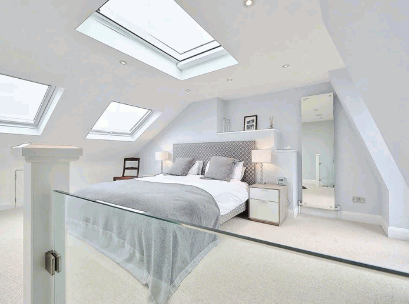
What Types Of Houses Can Have A Loft Conversion?
Various types of houses can accommodate a loft conversion, including detached, semi-detached, terraced houses, bungalows, and even flats or apartments, depending on the property suitability and existing roof structure, along with considerations for fire regulations. By assessing these properties, homeowners can determine if their residential properties meet the criteria for a successful home extension that not only enhances the living space but also adds value to the overall home, taking into account factors like headroom and roof pitch.
Detached Houses
Detached houses are often ideal candidates for a loft conversion due to their spacious design and greater flexibility in planning structural alterations.
With ample room to work with, these properties typically provide sufficient headroom necessary for comfortable loft living, enabling homeowners to create tailored spaces such as bedrooms, offices, or even playrooms, while ensuring compliance with insulation standards.
The distinct separation from neighboring homes also facilitates adherence to fire regulations, ensuring safety during and after the conversion process.
By leveraging the structural integrity of a detached house, conversion experts can maximize light and ventilation, ultimately increasing the value of the property and ensuring compliance with local area regulations.
The potential for enhanced living options not only improves lifestyle comfort but also significantly boosts the overall appeal and market worth of the home.
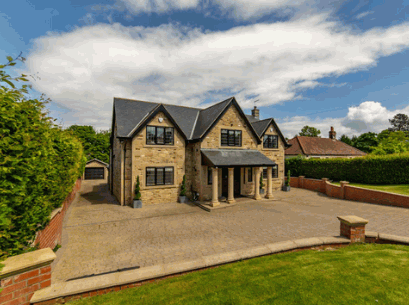
Semi-Detached Houses
Semi-detached houses can also benefit from loft conversions, provided that their roof pitch and structural integrity meet building regulations. This type of home improvement allows residents to maximize their living space while also enhancing the property’s overall value, leading to increased interest in residential projects.
These charming homes often have the ideal roof pitch that facilitates the conversion process, making it easier to create a usable and attractive loft area. Their relatively sturdy structures help ensure that any modifications comply with local building codes, enhancing safety and performance as well as the effectiveness of the loft designs.
- Height: Adequate ceiling height in the loft allows for comfortable living spaces.
- Natural Light: Opportunities for including windows greatly improve the ambiance.
- Accessibility: Well-designed staircases can be easily incorporated to link the new space with the rest of the home.
Many homeowners appreciate the chance to introduce versatile areas such as extra bedrooms or office spaces, making these conversions both practical and stylish, while providing valuable renovation advice. The distinct features of semi-detached houses provide numerous advantages for successful loft conversions.
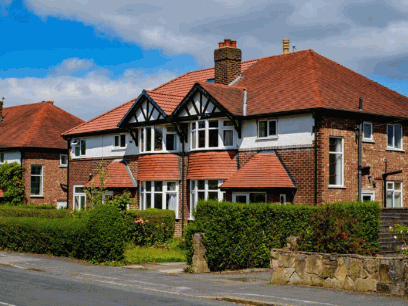
Terraced Houses
Terraced houses present unique opportunities for loft conversions, though they often require a more detailed planning application to address space limitations, legal requirements, and compliance with the party wall act. By ensuring proper insulation and structural considerations, homeowners can successfully enhance their living environment, which is crucial in addressing construction challenges.
But before embarking on this transformational journey, many individuals must navigate a complex landscape of regulations and requirements specific to their location, including obtaining planning consent and understanding local guidelines. For instance, the party wall act comes into play, necessitating consultations with neighboring property owners to prevent potential disputes. The planning application process can sometimes feel daunting, as additional documentation, including technical drawings and assessments, may be required to demonstrate adherence to local guidelines.
- Proper insulation is crucial; it not only enhances energy efficiency but also minimizes noise transfer between attached properties and addresses concerns regarding chimney stacks and water tanks.
- Homeowners must consider structural integrity, ensuring that the original design can support added weight or modifications while guaranteeing compliance with fire regulations.
- Working with architects and construction companies familiar with such properties can streamline this process significantly, ensuring all aspects, including the roof types and extension types, are considered holistically.
Ultimately, while the challenges may seem daunting, the rewards of added space and improved home value can more than compensate for the initial hurdles, making the investment in a loft project appealing.
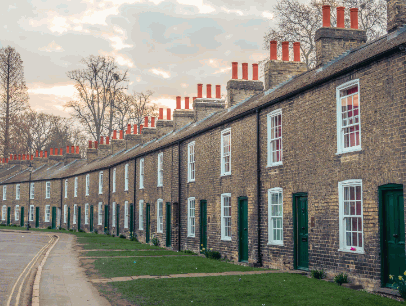
Bungalows
Bungalows can also undergo loft conversions, although homeowners must carefully conduct head height calculations to ensure the newly converted space is functional and meets usable space requirements, which is crucial for the renovation advice.
This type of home improvement provides an excellent opportunity to increase living space without the need for extensive structural alterations, thereby offering a cost-effective solution for homeowners. To achieve a successful loft conversion, it’s essential to consider the following aspects, including insulation and building materials:
- Head height calculations are crucial; insufficient height can limit the usability of the space.
- Design choices should prioritize functionality, ensuring that the loft can serve its intended purpose, be it a bedroom, office, or play area.
- Assessing local building regulations will help ensure compliance and smooth project execution.
Homeowners are encouraged to engage with professionals, such as a construction manager or structural engineer, who can provide insights on maximizing the potential of their bungalow’s loft while adhering to safety standards and aesthetic appeal.
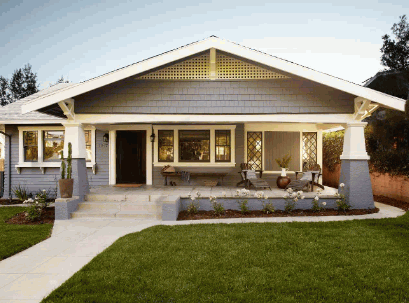
Flats/Apartments
While loft conversions in flats or apartments can be more complex due to shared structures and existing roof limitations, they are still possible with the right approach and adherence to building regulations, especially when considering free consultation options. Engaging a qualified construction manager can help navigate the challenges and ensure a successful project, particularly regarding compliance with the party wall act and legal requirements.
The process of transforming a loft into a functional living space carries its own unique hurdles, including the need for planning application approvals and adherence to building regulations. Property owners must consider legal considerations that arise from communal living, such as the need for permissions from co-owners or tenants.
- Obtaining consent from the freeholder is crucial, particularly if structural alterations are involved, to ensure adherence to local regulations and legal requirements.
- Local planning regulations may impose restrictions on height, design, or materials used, highlighting the importance of consultation with a construction company.
- Fire safety codes must be adhered to, ensuring compliant escape routes and fireproof materials, which are critical to navigating the complexities of residential projects.
Therefore, a thorough assessment of these elements, including insulation and structural alterations, can pave the way for a seamless conversion, allowing residents to enjoy their newly transformed loft space while adhering to necessary regulations.
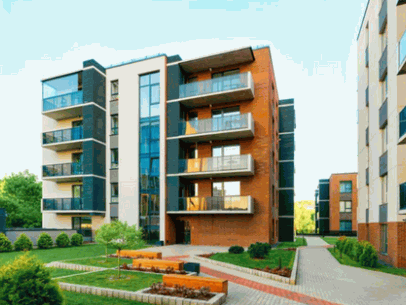
What Are The Benefits Of A Loft Conversion?
A loft conversion offers numerous benefits, including the significant increase in living space, which can enhance the overall functionality of a home while addressing the needs of modern homeowners. Additionally, this form of home improvement adds considerable value to the property, making it a cost-effective alternative to moving while allowing for personalization and customization options to fit various lifestyle needs.
Increases Living Space
One of the primary advantages of a loft conversion is the substantial increase in usable living space that it provides, allowing homeowners to create additional bedrooms, offices, or recreational areas while considering the design inspiration that suits their needs.
This remarkable transformation not only adds value to a property but also enhances the overall quality of living, creating ideal spaces for workspaces and relaxation. Homeowners can choose from a variety of room types to suit their needs, ranging from guest bedrooms to home offices, which can be tailored to personal preferences and functionality.
- Guest Bedrooms: Perfect for accommodating visitors without sacrificing space elsewhere.
- Home Offices: A dedicated space for remote work, fostering productivity in a serene environment.
- Playrooms: Ideal for children, providing a safe area for play that’s separate from the main living areas.
- Home Gyms: A private zone for fitness enthusiasts to work out at their convenience.
With such possibilities, the decision to undertake a loft conversion can significantly elevate the functionality of a home and provide valuable insights on local area preferences.
Adds Value To The Property
A loft conversion can significantly add value to a property, making it an appealing option for homeowners considering residential projects, especially in a competitive real estate market. This enhancement not only increases the home’s market value but also attracts potential buyers in a competitive market, yielding a favorable neighbourhood assessment. It provides extra living space, which is highly desired by many families and individuals looking to invest in their future, making it an essential consideration in property suitability assessments.
Research has shown that properties featuring loft conversions often see a return on investment of up to 20% or more, making it a worthwhile endeavor. This trend aligns with rising property values in urban areas, where space is at a premium, and effective project management can lead to successful outcomes. Potential buyers increasingly prioritize functional and adaptable living spaces, further enhancing the appeal of a well-executed loft conversion, especially when informed by design inspiration and expert advice.
- Market analysis indicates strong demand for properties with additional rooms, particularly those that have undergone successful loft designs.
- Buyers are often willing to pay a premium for features that optimize space, making the investment in loft conversion costs a significant return on investment opportunity.
- Homeowners can leverage this trend to maximize their investment returns by considering the age of property and potential structural alterations.
As preferences shift towards versatile living environments, the impact of a loft conversion on property value cannot be underestimated. It ultimately serves not just as an upgrade but as a strategic move in a fluctuating real estate market.
Cost-Effective Compared To Moving
Loft conversions are often a cost-effective alternative to moving to a larger home, saving homeowners from the expenses and hassle associated with the buying and selling process. By effectively utilizing existing space, homeowners can achieve their desired living arrangements without the need for significant financial investment.
One of the most compelling arguments for this approach lies in the substantial financial benefits that loft conversions offer when compared to relocating. It’s not just about the initial savings; homeowners also avoid additional costs such as hefty stamp duties, legal fees, and potential renovation expenses in a new property.
Loft conversions usually don’t require extensive planning permission, especially when they fall under permitted development rights, streamlining the entire process.
- Cost savings on moving expenses
- No additional legal fees
- Often minimal to no planning permissions needed
Ultimately, transforming an attic space can add significant value to the home, creating an investment that improves both lifestyle and property worth without the disruption that comes with moving.
Personalization And Customization Options
A loft conversion offers homeowners the opportunity for personalization and customization, allowing them to design a space that truly reflects their preferences and lifestyle. With careful design considerations, such as layout, lighting, and insulation, the possibilities are virtually endless.
When embarking on a loft conversion, it’s essential to think about the various customization options that can enhance the overall aesthetic and functionality of the area.
Consider the following:
- choice of materials
- color palettes
- window placements
- furniture selections
that will best suit individual tastes. Integrating modern amenities such as smart lighting systems or energy-efficient heating can transform the loft into a comfortable sanctuary.
Homeowners may also want to think about the unique features they can incorporate, such as built-in shelving, cozy reading nooks, or spacious wardrobes, all tailored to their daily needs and style preferences.
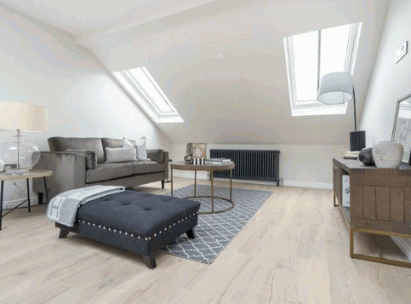
What Are The Requirements For A Loft Conversion?
There are several important requirements to consider for a loft conversion, including adequate head height, structural integrity, and compliance with building regulations. Additionally, planning permission may be required, depending on the extent of alterations and local guidelines.
Adequate Head Height
Adequate head height is crucial for a loft conversion, as it directly impacts the usability and functionality of the newly created space. Homeowners must conduct careful head height calculations to ensure the loft can be transformed into a comfortable living area.
In this regard, understanding the minimum requirement for head height is essential. Generally, a minimum clear height of 2.4 meters is recommended to allow for a functional living area. This height ensures that individuals can comfortably move about without the constant worry of bumping their heads.
- To determine the potential head height, measurements should be taken from the floor to the apex of the roof.
- Consideration of the ceiling joist depth and any insulation materials is vital, as these can further reduce available space.
- Local building regulations may impose specific standards that must be adhered to, ensuring safety and comfort.
By performing these calculations diligently, homeowners can maximize the loft’s potential, transforming it into a cozy bedroom, office, or lounge area, tailored to their unique needs.
Structural Integrity
Ensuring structural integrity is vital in any loft conversion project, as it determines the safety and durability of the newly altered space. Structural alterations must adhere to building regulations to create a sound and functional living area.
The significance of structural integrity extends beyond mere compliance; it guarantees that the modifications will withstand the test of time and adverse weather conditions. When embarking on a loft conversion, it’s essential to consider various factors, such as:
- The load-bearing capacity of existing walls and beams
- Proper insulation and ventilation methods
- Adequate access, including stairway construction and headroom regulations
By thoroughly assessing these components, homeowners can ensure that their projects not only meet local regulatory standards but also provide a safe, comfortable, and aesthetically pleasing environment for years to come.
Building Regulations Approval
Building regulations approval is a fundamental requirement for any loft conversion project, ensuring that the renovations meet legal requirements and safety standards. Before commencing the project, homeowners must submit a planning application and obtain the necessary approvals.
The process for obtaining these approvals can appear daunting, yet it significantly safeguards the integrity of the home and its occupants. Initially, the homeowner should consult with local authorities to understand the specific requirements related to their property type and its location. This can typically involve:
- Assessing local zoning laws to determine if the intended use of space complies.
- Gathering architectural plans that illustrate compliance with legal safety regulations.
- Engaging a certified professional to facilitate the paperwork and communicate effectively with planning officers.
Once everything is in order, the submission of the planning application is critical, as it formulates the basis for review by the council. Legal compliance not only streamlines the process but also enhances the overall value and security of the conversion project.
Planning Permission (If Needed)
In some cases, loft conversions may require planning permission, especially if they fall outside the scope of permitted development or are located in conservation areas. Homeowners should check local regulations to determine whether planning permission is necessary for their project. Understanding these regulations is critical to avoiding unnecessary delays and costs.
When considering a loft conversion, it’s essential to recognize the significance of permitted development rights, which allow certain types of home enhancements without formal approval. These rights can be restricted depending on the property’s age and location. It’s wise for homeowners to:
- Consult the local planning authority to clarify specific restrictions.
- Assess whether their home is in a conservation area, which may impose additional regulations.
- Check if their property has already undergone numerous past developments, potentially affecting their allowed extensions.
Navigating these complexities may seem daunting, but a careful review can ensure that individuals remain compliant and can enjoy their new loft space without future complications.
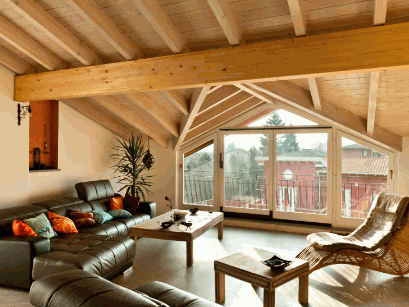
How Long Does A Loft Conversion Take?
The duration of a loft conversion can vary significantly based on several factors, including the complexity of the project, the type of construction, and project management efficiency, typically taking anywhere from 6 to 12 weeks to complete. Engaging a reputable construction company can streamline the process and ensure timely completion.
When considering a loft conversion, it’s essential to recognize how different elements might influence the overall timeline. A simple, straightforward design may require minimal alterations, thus reducing the timeframe. Intricate designs often involve additional challenges, such as reinforcing existing structures or ensuring compliance with local building regulations.
Below are some factors to consider:
- Construction Complexity: Complex designs necessitate more planning and skilled labor.
- Planning Permissions: Securing necessary approvals can introduce delays.
- Weather Conditions: Adverse weather can also stall the construction process.
- Project Management: Efficient oversight and coordination are crucial for adhering to timelines.
Ultimately, the careful selection of a qualified team can lead to a more predictable and efficient construction timeline.
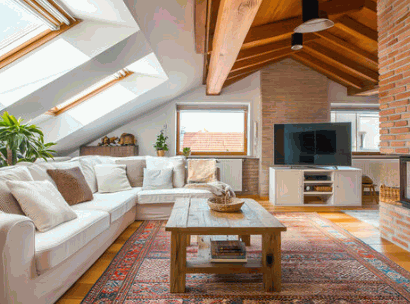
What Is The Cost Of A Loft Conversion?
The cost of a loft conversion can vary widely depending on factors such as design, building materials, and the complexity of the project, but it generally ranges from £20,000 to £50,000, making it a cost-effective alternative to moving to a larger home.
When considering a loft conversion, one must navigate through several key aspects that directly influence the overall budget. For instance, materials play a crucial role in determining expenses; opting for high-quality insulation or sustainable options can elevate costs but provide long-term benefits.
Specific:
- design choices
- local building regulations
- special architectural features
can add complexity and, consequently, additional costs to the project. Construction challenges such as existing structural issues or limited access may lead to unexpected expenses. Homeowners should therefore carefully evaluate these elements before diving into their ambitious loft renovation plans.
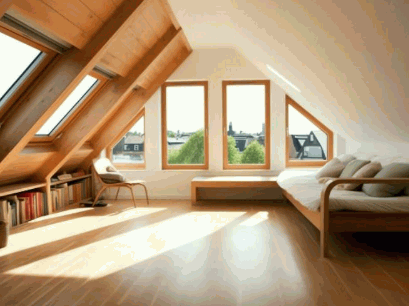
What Are The Steps Involved In A Loft Conversion?
The process of a loft conversion typically involves several key steps, starting with an initial consultation with a construction manager to assess the feasibility of the project and discuss design options, followed by obtaining planning applications and building regulations approvals before commencing construction. Home building considerations are also crucial in this phase. The process of a loft conversion typically involves several key steps, starting with an initial consultation with a construction manager to assess the feasibility of the project and discuss design options, followed by obtaining planning applications and building regulations approvals before commencing construction.
Initial Consultation And Design
The initial consultation for a loft conversion is crucial, as it allows the homeowner to discuss their vision with a construction manager and outline key design considerations, including layout, insulation, and potential structural alterations, particularly when dealing with loft structures.
The initial consultation for a loft conversion is crucial, as it allows the homeowner to discuss their vision with a construction manager and outline key design considerations, including layout, insulation, and potential structural alterations.
This meeting offers an invaluable opportunity for both parties to align expectations, explore creative possibilities, and ensure that all ideas are practically achievable. By engaging in an open dialogue, the homeowner can express their preferences for materials, aesthetics, and functionality, while the construction manager can provide insights based on experience regarding structural integrity and compliance with local regulations.
- Understanding the space: During the consultation, essential questions arise, such as how to maximize natural light and ensure optimal airflow.
- Budget considerations: Discussing financial boundaries early on enables more accurate planning and avoids future surprises.
Ultimately, this collaborative approach not only streamlines the design process but also fosters a sense of partnership, making the journey towards a successful loft conversion more enjoyable and efficient. Remember, addressing these critical aspects during the initial meeting lays the groundwork for a seamless project execution.
Planning And Building Control Approval
After the initial consultation, the next step is to submit a planning application and obtain building control approval, ensuring compliance with legal requirements and safety standards for the loft conversion in London. After the initial consultation, the next step is to submit a planning application and obtain building control approval, ensuring compliance with legal requirements and safety standards for the loft conversion.
The importance of this process can’t be understated, as failing to secure the necessary permissions may result in costly fines or the requirement to undo completed work. During the planning phase, the potential homeowner should prepare detailed plans and documentation that illustrate the intended changes, which must meet local zoning laws and regulations.
- Planning permission typically requires a description of the intended project.
- Building control approval focuses on the structural integrity and safety measures.
- Consulting professionals can significantly streamline this process.
Construction And Building Work
Once approvals are secured, the construction phase can commence, where a skilled construction company will carry out the necessary building work, guided by effective project management to ensure timely progress and quality results. Once approvals are secured, the construction phase can commence, where a skilled construction company will carry out the necessary building work, guided by effective project management to ensure timely progress and quality results.
During this critical phase, the construction team will begin with meticulous preparations, setting the stage for a seamless execution. This involves a series of structured steps:
- Site Preparation: Clearing the area and setting up necessary safety measures.
- Structural Work: Engaging in the rigorous tasks of framing, roofing, and installing insulation to meet structural integrity standards.
- Utilities Installation: Coordinating with specialists to ensure plumbing, electrical, and HVAC systems are implemented efficiently.
Throughout this process, the project management team plays a vital role in liaising with contractors, tracking milestones, and ensuring that construction timelines remain on schedule. Regular progress meetings are crucial for addressing challenges promptly and maintaining open communication among all stakeholders.
Finishing And Decorating
The final step of a loft conversion involves finishing and decorating the space, where homeowners can transform the newly created area into a functional and aesthetically pleasing environment, drawing on design inspiration that reflects their personal style. The final step of a loft conversion involves finishing and decorating the space, where homeowners can transform the newly created area into a functional and aesthetically pleasing environment, drawing on design inspiration that reflects their personal style.
This phase is crucial, as it allows for the customization of the loft to suit individual needs while enhancing the overall living experience. By selecting materials, colors, and furnishings that resonate with their vision, residents can create a unique atmosphere.
Design choices may include:
- Open floor plans that promote a sense of spaciousness
- Warm lighting options to create an inviting ambiance
- Textured wall finishes that add depth and character
Exploring various styles, from minimalist to eclectic, offers numerous possibilities for creativity and self-expression. Engaging with recent trends and timeless classics can also inspire innovative solutions that merge functionality with aesthetics, ensuring the loft conversion is not just a dream space but a vibrant part of the home.
